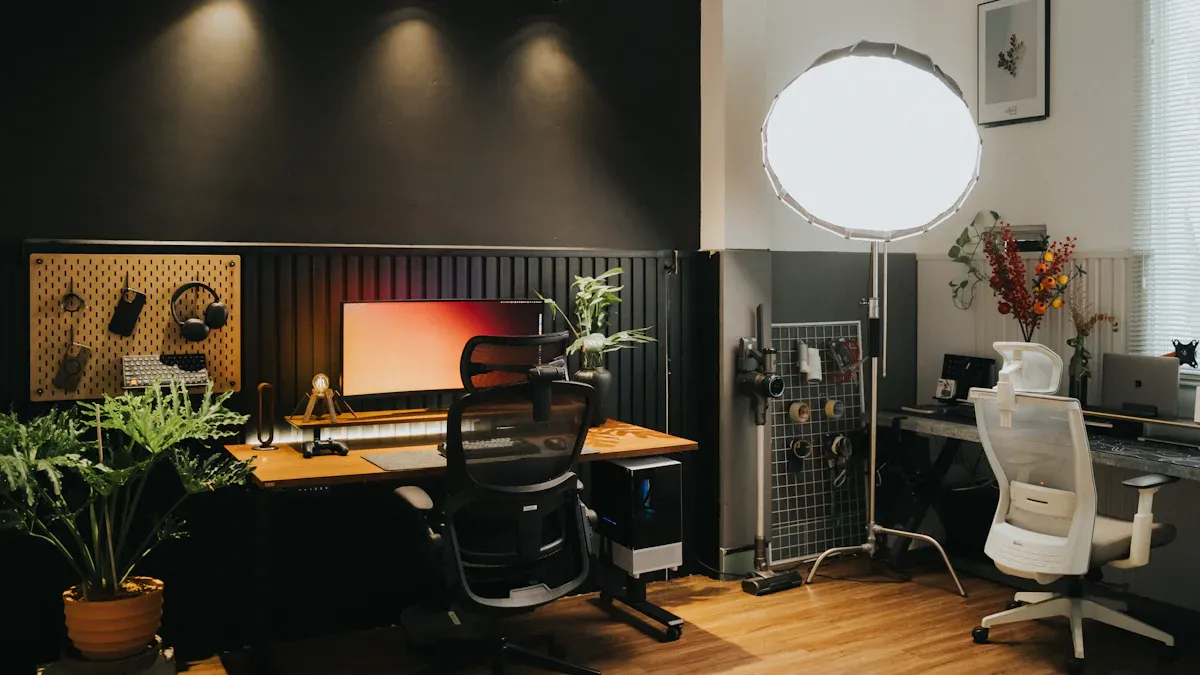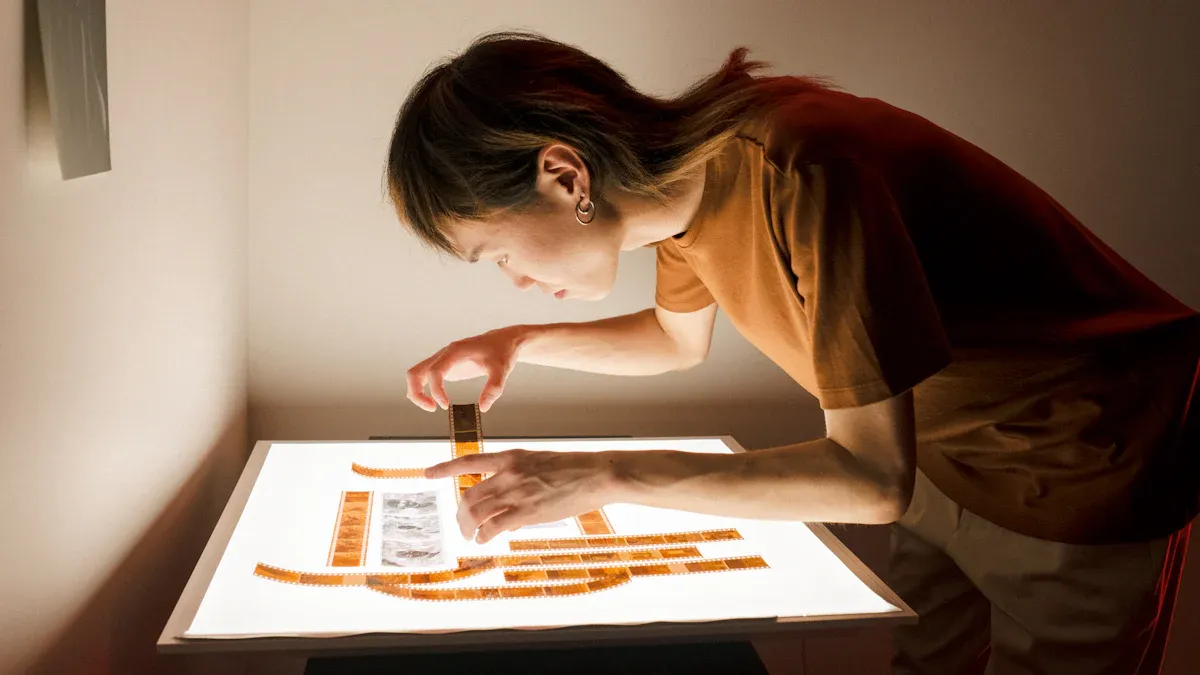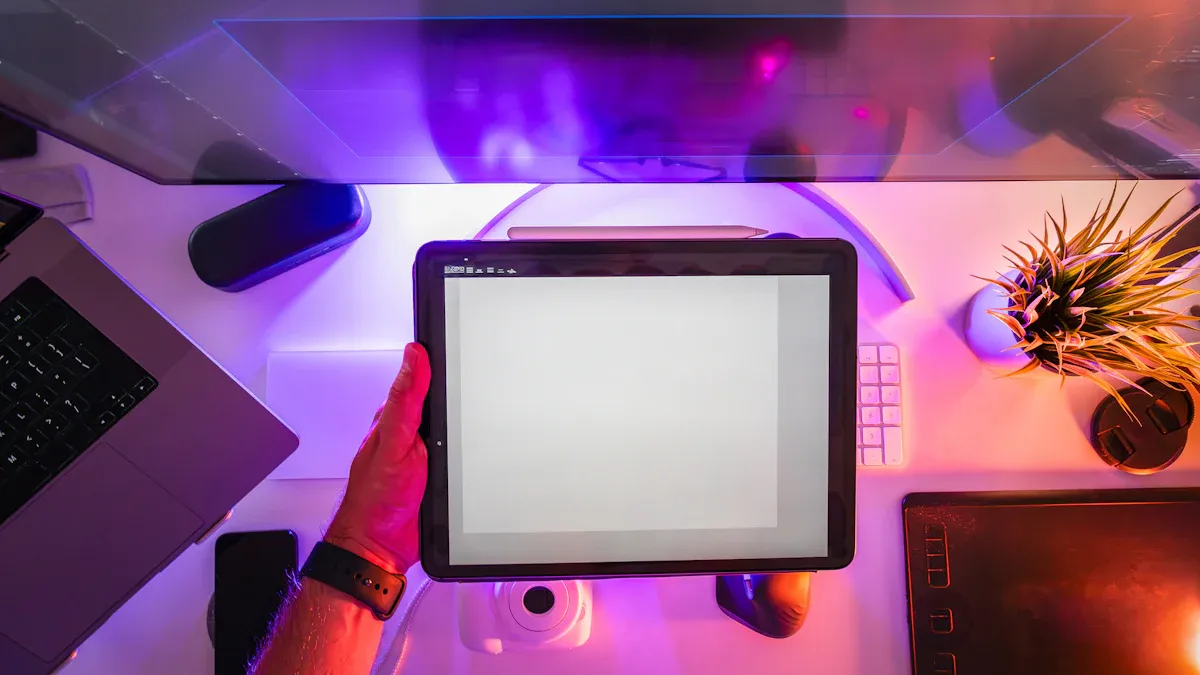How to Choose the Perfect Art LED Light Box for Your Creative Projects

You want the most important factor when choosing a Perfect Art LED Light Box to be how well it fits your creative needs. Think about size, material, workspace, and installation. Over 60% of creative professionals rely on LED light boxes for precision work. Ask yourself what projects you do and how a light box helps you create.
Key Takeaways
Think about your creative projects before picking light box features. Think about what you make, like drawing, crafting, or tracing.
Pick a light box size that fits your desk. Measure your space so it does not take up too much room.
Find a light box with adjustable brightness. This lets you change the light for different jobs and helps your eyes feel comfortable.
Define Your Creative Projects & Needs

Types of Creative Projects
Before you pick an art LED light box, think about what you like to make. You might draw, design, or take photos. Some people enjoy lettering or making crafts. Others use light boxes to trace patterns for quilting. Kids can use them to trace pictures or letters. You can also make 3D paper cut light boxes for your room or as gifts.
Lettering
Crafts
Pattern tracing and quilting
Kids' activities
3D paper cut light boxes
Home decor
Gift ideas
Tip: Make a list of the projects you do most. This will help you know which features you need.
Match Features to Needs
The projects you do decide what features you need in a light box. If you make business displays, you need to see your work clearly. Art projects might need more ways to change and show your ideas. LED light boxes let you pick the size and style you want. You can choose strong acrylic or clear boxes. You can add LED strips and change the brightness to fit your work.
Think about the main idea for each project.
Plan and improve your work by brainstorming.
Finish your projects by checking details and how they look.
Balance, rhythm, and pattern are important in drawing and design. Emphasis and contrast make your work stand out. Unity brings everything together. When you pick the right features, your projects get easier and more fun.
Choose the Perfect Art LED Light Box

Light Box Size & Workspace
You want your workspace to be neat and comfy. Think about how big your art projects are. Also, look at how much space you have. If you make big art, you need a larger light box. Small crafts or tracing work fit on smaller light boxes. The perfect art led light box should fit your desk or studio. You can put it on a table, shelf, or even your lap. Some light boxes are portable, so you can move them easily.
Tip: Measure your space before you buy. Make sure your perfect light box fits and does not crowd your area.
Material: Acrylic vs. Glass
You can pick acrylic or glass for the surface. Acrylic is light and hard to break. It is good if you move your light box a lot. Glass feels smooth and strong, but it is heavier and can break if dropped. Acrylic panels are half as heavy as glass. This makes them easier to carry and set up. Acrylic also spreads light well, so tracing and drawing are easier.
Acrylic is safer for kids and busy places.
Glass looks classic but needs careful use.
Acrylic gives great light and is flexible.
If you care about the earth, LEDs use less power than old lights. They last longer and make less trash. Many perfect art led light box models use materials you can recycle. This helps the planet while you make art.
Brightness & Adjustability
You need good light for every project. The perfect light box should let you change how bright it is. This helps you get the right light for each task. Some light boxes let you pick the color of the light. This can help your eyes feel better during long art sessions.
Here’s a quick look at recommended brightness and features:
Brightness Type | Measurement |
|---|---|
Total Light Power | 3,274 lumens |
Screen Brightness | 12,000 LUX |
Light Output | 5500K - 6000K |
200 lux is best for oil paintings and acrylics
150 lux works for mixed media and textiles
50 lux is good for paper and photos
Many perfect art led light box models let you change the brightness. You can make the light dim for soft work or bright for bold art. Some brands, like Voilamart and LitEnergy, protect your eyes and stop glare. Good designs help you work longer without getting tired.
Installation: Wall-Mounted or Freestanding
You can set up your perfect light box in different ways. Wall-mounted models save space and make your studio look tidy. Freestanding light boxes are easy to move and use anywhere. If you want to change your workspace often, freestanding is best. Wall-mounted light boxes need planning and tools like drills and screwdrivers. You must attach them to wall studs and connect wires safely.
Here’s a table comparing installation options:
Feature | Wall-Mounted Models | Freestanding Models |
|---|---|---|
Installation Complexity | Needs planning and special tools | Easy to set up and move |
Tools Needed | Drill, screwdriver, level, wire connectors | No tools needed for setup |
Electrical Considerations | Must connect wires and follow safety rules | Just plug into an outlet |
Mounting Requirements | Must be attached to wall studs | No mounting needed |
Height Placement | Usually 60 to 66 inches from the floor | Can go anywhere on a flat surface |
Note: Always check for safety labels like UL, CE, and RoHS when you pick a perfect art led light box. These labels show your light box is safe and good for the environment.
When you pick a light box, think about your space and art. Also, think about how you like to work. The right light box helps you feel sure and comfy. The perfect light box makes your ideas shine with great light and features.
Compare Value & Make a Confident Choice
Budget & Value
You want to get the most out of your money when shopping for light boxes. Start by setting a clear budget and schedule for your purchase. Prices can vary a lot, especially if you want professional features. Here’s a quick look at what you might pay for different options:
Features | Price |
|---|---|
12,000 LUX Brightness | £298.80 |
21,000 LUX Brightness | £452.52 |
Digital Control Panel | Included |
Stainless Steel | Included |
Dimming (10 - 100%) | Included |
Light boxes with advanced features like super-bright LEDs, thin designs, and stainless steel frames cost more. You might pay more at first, but LED light boxes save you money over time. They use less energy, need fewer repairs, and last longer than old-style light boxes. You spend less on bills and replacements.
Tip: Think about what features you really need. Sometimes a simple model works just as well for your projects.
User Reviews & Recommendations
Before you buy, check what other artists say about their light boxes. Reviews often mention things you might not notice at first. Here are some common pros and cons:
Pros | Cons |
|---|---|
Ergonomic slant, pencil holder | No dimmer, can get hot |
Adjustable brightness, lightweight | Expensive, ruler is metric only |
Eyesight protection, compact design | Some issues with light intensity |
Built-in storage tray, affordable price | Light can be too bright for long use |
You can also look at trusted brands. Many artists like the Artograph LightTracer, Gagne Porta-Trace, and Daylight Wafer light boxes. These models get good reviews for brightness, comfort, and value.
Note: Avoid common mistakes. Make sure your light box has adjustable brightness, fits your workspace, and uses quality materials.
When you compare light boxes, read reviews, check features, and think about your needs. This helps you make a smart choice and feel happy with your new tool.
You can find the perfect art LED light box by following these steps:
Pick the right size for your projects.
Choose adjustable brightness.
Look for helpful features.
Set your budget.
Check user reviews.
Key Aspect | Why It Matters |
|---|---|
Customization | Lets you show your style and boost creativity. |
Planning | Helps your art stand out and grab attention. |
A great light box makes your ideas shine. Let your creativity soar! ✨
FAQ
How do you clean your LED light box?
You can wipe the surface with a soft, dry cloth. Avoid water or harsh cleaners. Keep dust away for better light and longer life.
Can you use a light box for tracing photos?
Yes, you can! Place your photo on the box, then put tracing paper on top. The light helps you see every detail.
What size light box should you choose?
Tip: Match the box size to your biggest project. If you draw large posters, pick a bigger box. For small crafts, a compact box works best.
See Also
Selecting Ideal Acrylic Panels for Your Light Box Displays
Finding the Best Wall Mount System for LED Light Boxes
Choosing the Right Acrylic Sheet for Your Light Box

